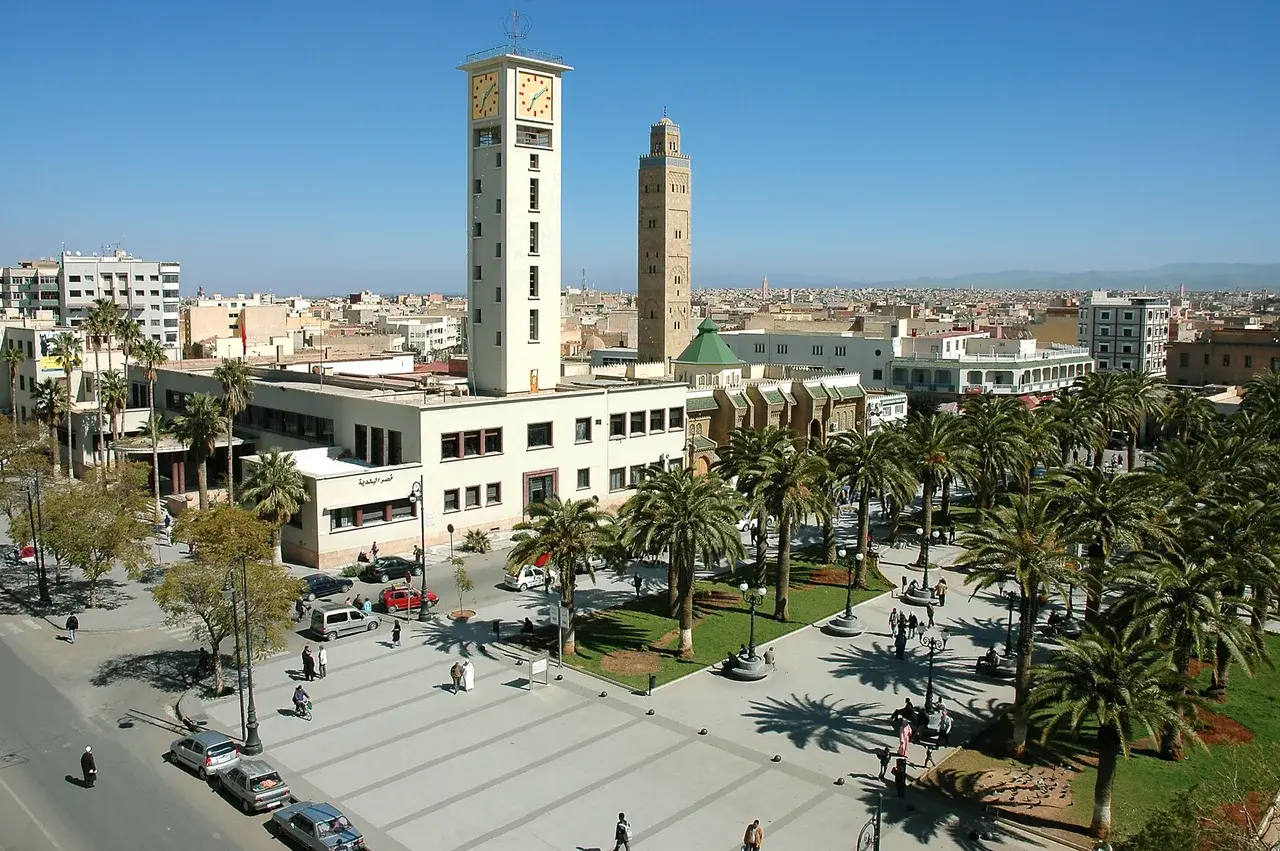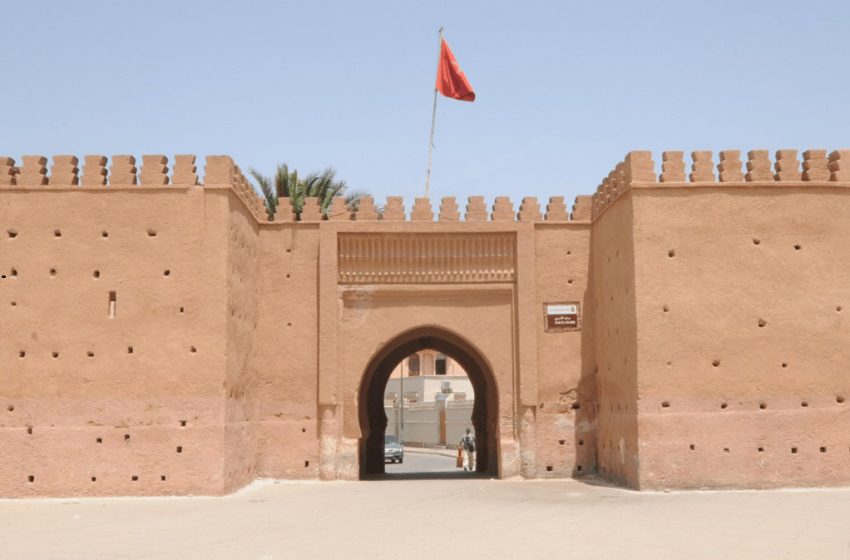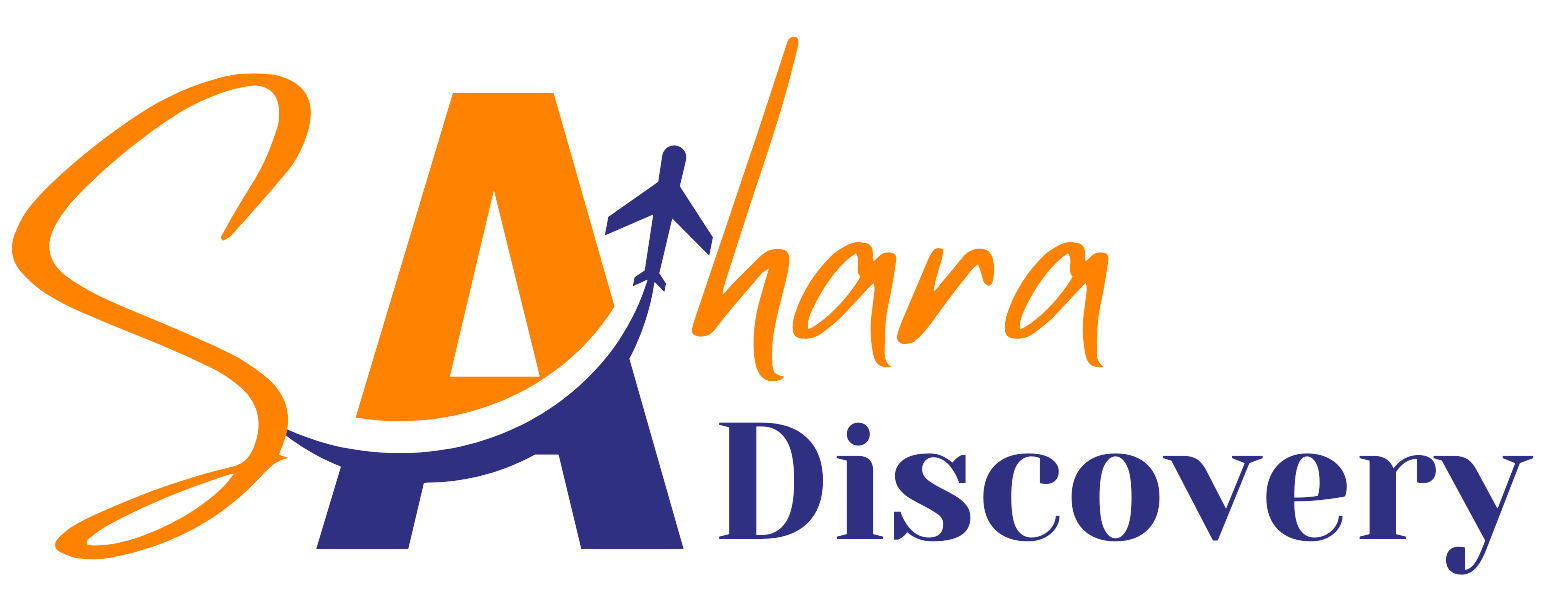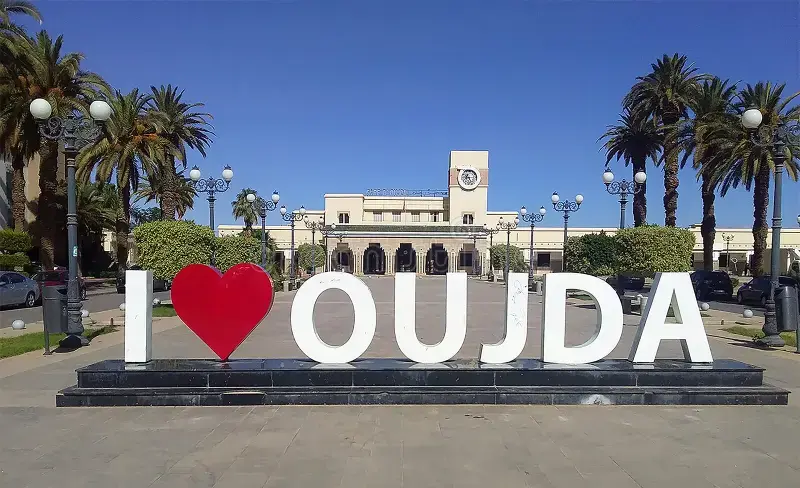The Ultimate Guide: 25 Best Things To Do In Oujda
Introduction: Discovering Morocco’s Eastern Gem
Welcome to Oujda, Morocco’s captivating eastern city that sits at the crossroads of cultures. Often overlooked by mainstream tourism, this vibrant destination offers an authentic glimpse into Moroccan life away from the well-trodden paths of Marrakech and Fes. With its rich blend of Andalusian, Berber, and Arabic influences, Oujda presents visitors with a fascinating cultural tapestry waiting to be explored.
This comprehensive guide to things to do in Oujda is based on extensive research and conversations with locals who know the city intimately. Whether you’re planning a dedicated visit or incorporating Oujda into a broader Moroccan itinerary, you’ll discover why this border city deserves your attention and how to make the most of your time here.
Quick Overview: Oujda’s Top 5 Must-Dos
Before diving into the details, here are the absolute must experience attractions in Oujda:
- Wander through the ancient Medina : and pass through the historic Bab Sidi Abdelouahab
- Visit Dar Sebti : to experience the city’s cultural heartbeat
- Relax in Parc Lalla Aicha : the city’s green oasis
- Sample local cuisine : including Karan and Bakbouka
- Experience traditional Gharnati music : Oujda’s distinctive cultural heritage
Getting Your Bearings in Oujda
Located in eastern Morocco just 15 kilometers from the Algerian border, Oujda serves as an important transport hub and cultural crossroads. The city enjoys a Mediterranean climate with hot, dry summers and mild winters.
Best time to visit: Spring (April-May) and fall (September-October) offer pleasant temperatures ideal for exploring. Avoid the scorching summer months if possible, when temperatures regularly exceed 95°F (35°C).
Getting there:
- By air: Angads Airport (OUD) connects with major Moroccan cities and some European destinations
- By train: Excellent rail connections to Fez, Casablanca, and Tangier via Morocco’s efficient ONCF train network
- By bus: Numerous companies offer services from major Moroccan cities
Getting around: The city center is compact and walkable. Petit taxis (small red cars) are abundant and affordable for longer distances, with most rides within the city costing between 10-30 dirhams. For exploring beyond the city, local tour companies like Sahara Discovery offer both guided day tours and transportation services to nearby attractions.
Exploring the Historic Heart: The Medina

Bab Sidi Abdelouahab
The majestic gate of Bab Sidi Abdelwahab stands as Oujda’s most recognizable landmark and the principal entrance to the ancient Medina. Dating back to the 13th century, this impressive structure showcases classical Moorish architecture with its horseshoe arch and intricate stonework.
Practical info: Located on the western side of the Medina, it’s easily accessible from downtown.
Insider tip: Visit in the late afternoon when the golden sunlight illuminates the sandstone, creating the perfect backdrop for memorable photographs.
The Old Souks
Diving into Oujda’s maze like souks offers an authentic shopping experience far removed from the tourist oriented markets of more visited Moroccan cities. Here, locals shop for daily necessities among stalls selling everything from fresh produce and spices to handcrafted goods and traditional clothing.
Practical info: The main souks branch off from the central Medina area. While less intimidating than larger Moroccan markets, it still helps to maintain your sense of direction.
Insider tip: Oujda is known for its leather goods and embroidered textiles. Bargaining is expected, but prices start lower than in tourist centers like Marrakech. Start by offering about 60% of the initial asking price and negotiate from there.
Grand Mosque of Oujda
The Grand Mosque (Jamaa El-Kebir) represents the spiritual center of the old city. While non-Muslims cannot enter, the exterior showcases beautiful Islamic architecture with its distinctive minaret visible from various points throughout the Medina.
Practical info: Located in the heart of the Medina, you’ll likely pass by it during your explorations.
Insider tip: Visit during one of the five daily calls to prayer to experience the atmospheric moment when the adhan (call to prayer) echoes throughout the Medina. Remember to dress modestly and observe from a respectful distance.
The Andalusian Quarter
This historic neighborhood reflects Oujda’s strong connections to Andalusian culture, with narrow winding streets and traditional homes featuring distinctive architectural elements. The area offers a glimpse into how Spanish-Muslim influence shaped the region’s cultural identity.
Practical info: Located in the northeastern section of the Medina.
Insider tip: Look for the decorative doorways with their characteristic horseshoe arches and colorful tile work they make excellent photo opportunities while respecting residents’ privacy.
Parks and Green Spaces
Parc Lalla Aicha
This sprawling urban park serves as Oujda’s green lung and a beloved recreational space for locals. Spanning several hectares, Parc Lalla Aicha offers shaded walking paths, ornamental gardens, a small zoo, and recreational facilities including a swimming pool.
Practical info: Located in the modern city center, open daily from sunrise to sunset. The swimming pool has a small entrance fee (approximately 20 dirhams), while the park itself is free to enter.
Insider tip: Visit in the early evening when local families gather for leisurely strolls and picnics. The northwestern corner offers the best people-watching spots and several snack vendors.
Jardin El Houria
This smaller but well-maintained garden provides a peaceful retreat from the bustle of the city center. With its manicured lawns, flowering plants, and comfortable benches, it’s an ideal spot for a short break between sightseeing.
Practical info: Located near Avenue Mohammed V in the new city. Open daily with no entrance fee.
Insider tip: The garden is particularly beautiful in spring when the rose bushes are in full bloom.
Cultural Experiences in Oujda
Dar Sebti
Housed in a restored 20th century palace, Dar Sebti stands as Oujda’s premier cultural center. The building itself is a masterpiece of Moroccan Andalusian architecture, featuring a central courtyard with ornate tile work, carved cedar ceilings, and traditional furnishings.
Practical info: Located near Place du 16 Août in the new city. Open Monday through Saturday, 9:00 AM to 5:00 PM. Entrance fee is approximately 10 dirhams.
Insider tip: Check the center’s current exhibition schedule, as Dar Sebti regularly hosts art displays, musical performances (particularly Gharnati concerts), and cultural workshops. The staff can often provide information in French and sometimes English.
Experience Gharnati Music
Oujda proudly preserves Gharnati music, an Andalusian musical tradition that found its way to Morocco when Muslims and Jews fled Spain in the 15th century. This sophisticated musical style combines stringed instruments, percussion, and soulful vocals in performances that can last for hours.
Practical info: Regular performances are difficult to schedule in advance, but the city hosts a Gharnati Music Festival annually, usually in July or August.
Insider tip: Ask at your accommodation or at Dar Sebti about current performances. Some traditional cafés occasionally host informal sessions, particularly on weekend evenings.
Municipal Museum of Oujda
Though modest in size, this museum houses an interesting collection of archaeological artifacts, traditional crafts, and historical documents that illuminate Oujda’s rich past. Exhibits trace the city’s development from ancient times through the medieval period and into the French Protectorate era.
Practical info: Located near the central post office. Open Tuesday through Sunday, 10:00 AM to 6:00 PM. Entrance fee is approximately 20 dirhams.
Insider tip: The museum’s collection of traditional Oujdi textiles is particularly noteworthy, showcasing the region’s distinctive embroidery styles and weaving techniques.
Beyond the Center
Sidi Yahya Oasis
Located about 15 kilometers southwest of Oujda, this natural oasis centers around the tomb of a venerated saint. The lush palm groves and natural springs create a stark contrast to the surrounding semi-arid landscape. The site combines natural beauty with cultural significance, as locals consider the waters to have healing properties.
Practical info: Accessible by grand taxi from Oujda for approximately 25-30 dirhams per person, or as part of an organized half-day tour with companies like Sahara Discovery (approximately 250-350 dirhams including transportation and guide). The site is open daily from morning until sunset.
Insider tip: Visit on a weekday to avoid crowds, as the oasis becomes a popular picnic spot for local families on weekends. If you’re interested in the historical and spiritual significance of the site, a knowledgeable guide can greatly enhance your experience.
Angads Plain
The agricultural lands surrounding Oujda offer a pleasant rural contrast to the urban environment. This fertile region produces olives, citrus fruits, and vegetables that supply the city’s markets.
Practical info: Consider hiring a guide or joining an organized excursion to explore this area properly.
Insider tip: The olive harvest season (November-December) is particularly interesting, when you can visit traditional olive presses and sample freshly produced oil.
Foodie Adventures in Oujda
Must-Try Local Dishes
Oujda’s cuisine reflects its border position, blending traditional Moroccan flavors with distinct local specialties:
- Karan: A local specialty consisting of spiced meatballs cooked in a rich tomato sauce, often served with bread for dipping.
- Bakbouka: A slow-cooked dish combining vegetables and meat (usually lamb) with distinctive eastern Moroccan spices.
- Sfenj: Morocco’s version of donuts ring-shaped fried dough usually enjoyed for breakfast or afternoon snacks with mint tea.
- Eastern-style Tagines: Often prepared with additional spices that distinguish them from western Moroccan versions.
- Berkoukes: Hand-rolled pasta pearls served with a vegetable and meat stew, showcasing Berber culinary influence.
Best Places to Eat
Oujda offers dining options spanning from street food to more upscale restaurants:
Street Food Areas:
- The area around Place du 16 Août comes alive in evenings with food stalls selling grilled meats, sandwiches, and snacks (budget-friendly at 10-30 dirhams per item).
- The Medina’s food section offers authentic local specialties at very reasonable prices.
Local Cafés and Restaurants:
- The modern city center houses numerous mid-range restaurants serving Moroccan classics and some international options (50-120 dirhams per person).
- For more upscale dining, look to the establishments along Boulevard Mohammed V and around Parc Lalla Aicha (150-250 dirhams per person).
Insider tip: Look for restaurants filled with locals rather than tourists, particularly those with limited menus this often indicates fresh, specialized offerings rather than trying to please all tastes.
Shopping Guide (Beyond the Souk)
While the Medina’s souks offer traditional shopping experiences, Oujda also boasts modern retail options:
Avenue Mohammed V
This main commercial thoroughfare features clothing boutiques, electronics shops, and department stores catering to contemporary tastes. It’s the place to go for everyday needs or modern Moroccan fashion.
Practical info: Most shops open around 9:00 AM and close by 8:00 PM, with many observing a midday break. Shops typically close earlier on Fridays.
Specialty Shops and Artisanal Products
Keep an eye out for these Oujda specialties:
- Leather goods: The region produces quality leather products, particularly bags and traditional shoes
- Embroidered textiles: Look for distinctive eastern Moroccan patterns on tablecloths and decorative items
- Local olive oil: Available in the markets, often sold in recycled bottles
- Spice blends: Eastern Moroccan spice mixtures differ subtly from those found elsewhere in the country
Insider tip: For authentic artisanal products, ask for “beldi” (traditional/local) rather than “roumi” (imported/modern) goods.
Potential Day Trips from Oujda
Saïdia (Beach Resort)
Known as the “Blue Pearl,” Saïdia boasts 14 kilometers of beautiful Mediterranean beaches with golden sand and clear waters. This seaside resort town offers a refreshing contrast to inland Oujda.
Practical info: Located 60 kilometers north of Oujda (about 1 hour by car). Accessible by grand taxi (approximately 70-100 dirhams per person), private transport, or as part of an organized day tour with local operators like Sahara Discovery, who offer round-trip transportation with beach time included (around 400-500 dirhams).
Insider tip: While Saïdia gets crowded with domestic tourists in July and August, it’s pleasantly uncrowded during shoulder seasons when the weather can still be warm enough for swimming (May-June and September-October).
Tafoughalt & Zegzel Gorge
For nature enthusiasts, this mountainous area southwest of Oujda offers dramatic landscapes, hiking opportunities, and the impressive Zegzel Gorge with its limestone formations and hidden caves.
Practical info: Located about 30 kilometers from Oujda. Best accessed by private transport or through an organized tour with companies like Sahara Discovery, who offer guided hiking experiences with transportation (starting from 600 dirhams per person, depending on group size).
Insider tip: Combine your visit with a stop at Grotte du Chameau (Camel Cave), known for its spectacular stalactite and stalagmite formations. Most organized tours include this highlight, or local guides are available at the entrance for approximately 50-100 dirhams.
Desert Excursions
For those seeking a taste of the Sahara without traveling to Morocco’s deep south, Sahara Discovery organizes excursions to the desert regions accessible from Oujda. These range from single-day visits to nearby desert landscapes to multi-day adventures that reach the edge of the true Sahara.
Practical info: Single-day tours start from around 800-1000 dirhams per person (minimum participants usually required), while multi-day tours start from 2500 dirhams including transportation, accommodation, and some meals.
Insider tip: The 3-day tours offer the most authentic desert experience, including a night in a traditional camp and the opportunity to witness sunrise over the dunes a truly magical Moroccan experience worth the additional time.
Practical Information Summary
Accommodation
Oujda offers accommodation options to suit various budgets:
- Budget: Simple hotels and hostels in and around the Medina (200-400 dirhams per night)
- Mid-range: Modern hotels in the city center (500-800 dirhams per night)
- Upscale: A limited selection of higher-end hotels with additional amenities (900+ dirhams per night)
Booking tip: For desert excursions and multi-day tours, companies like Sahara Discovery often include accommodation arrangements as part of their packages, which can simplify planning and sometimes offer access to unique stays such as desert camps or traditional guesthouses not easily bookable online.
Safety
Oujda is generally safe for visitors, though standard precautions apply:
- Keep valuables secure and be vigilant in crowded areas
- Avoid isolated areas after dark
- Women travelers should dress modestly to respect local customs
Language
Arabic is the official language, with Darija (Moroccan Arabic) most commonly spoken. French is widely understood, especially among the educated population and in tourist-facing businesses. Basic Arabic phrases to know:
- “Salaam alaikum” (Hello/Peace be upon you)
- “Shukran” (Thank you)
- “La, shukran” (No, thank you)
- “B’shhal?” (How much?)
Currency
The Moroccan Dirham (MAD) is the local currency. ATMs are readily available in the city center. Credit cards are accepted at larger establishments but carry cash for smaller shops and the Medina.
Connectivity
Wi-Fi is available in most hotels, cafés, and restaurants. Local SIM cards with data packages can be purchased affordably (starting from around 50 dirhams) from Maroc Telecom, Orange, or Inwi shops with just your passport.
Sample Itineraries

Oujda in 1 Day
Morning:
- Explore the Medina, passing through Bab Sidi Abdelwahab
- Wander the souks and admire the Grand Mosque (from outside)
Afternoon:
- Lunch at a local restaurant sampling Oujdi specialties
- Visit Dar Sebti cultural center
- Relax in Parc Lalla Aicha
Evening:
- Dinner in the modern city center
- Evening stroll along Avenue Mohammed V
Limited Time Tip: If you’re extremely short on time, Sahara Discovery offers a condensed “Oujda Highlights” guided tour that covers the main attractions in about 4 hours, perfect for those with brief stopovers.
Oujda in 2-3 Days
Day 1: Follow the one-day itinerary above
Day 2:
- Morning: Visit the Municipal Museum
- Afternoon: Explore the Andalusian Quarter in greater depth
- Evening: Search out a café or restaurant with traditional music
Day 3:
- Day trip to either Saïdia beach or Tafoughalt & Zegzel Gorge with Sahara Discovery or another local operator who can handle the logistics while providing cultural and historical context
Extended Exploration (4-7 Days)
For travelers with more time, Oujda makes an excellent base for exploring eastern Morocco:
Days 1-2: Explore Oujda thoroughly as outlined above
Days 3-4: Undertake a desert excursion with Sahara Discovery, experiencing a night in the desert under the stars
Days 5-6: Visit Saïdia for beach relaxation and Mediterranean coastal culture
Day 7: Return to Oujda for final shopping and relaxation before departure
This extended itinerary allows you to experience the diverse landscapes of eastern Morocco city, mountain, desert, and coast without constantly changing accommodations.
Why Visit Oujda?
Oujda offers travelers a genuine slice of Moroccan life away from the well-worn tourist trail. Its unique position as a cultural crossroads has created a fascinating blend of influences visible in its architecture, cuisine, and musical traditions. While it may lack the immediate visual impact of Morocco’s more famous imperial cities, Oujda rewards the curious visitor with authentic experiences and interactions that feel refreshingly real.
The city’s manageable size makes it easy to navigate, while its proximity to both natural attractions and the Mediterranean coast offers diverse experiences within easy reach. For travelers seeking to venture beyond Morocco’s established tourism circuit, Oujda provides a welcoming alternative that combines cultural richness with everyday Moroccan life.
Have you visited Oujda or are you planning a trip to eastern Morocco? Share your experiences or questions in the comments below! And don’t forget to check out our related guides on Moroccan travel experiences.




